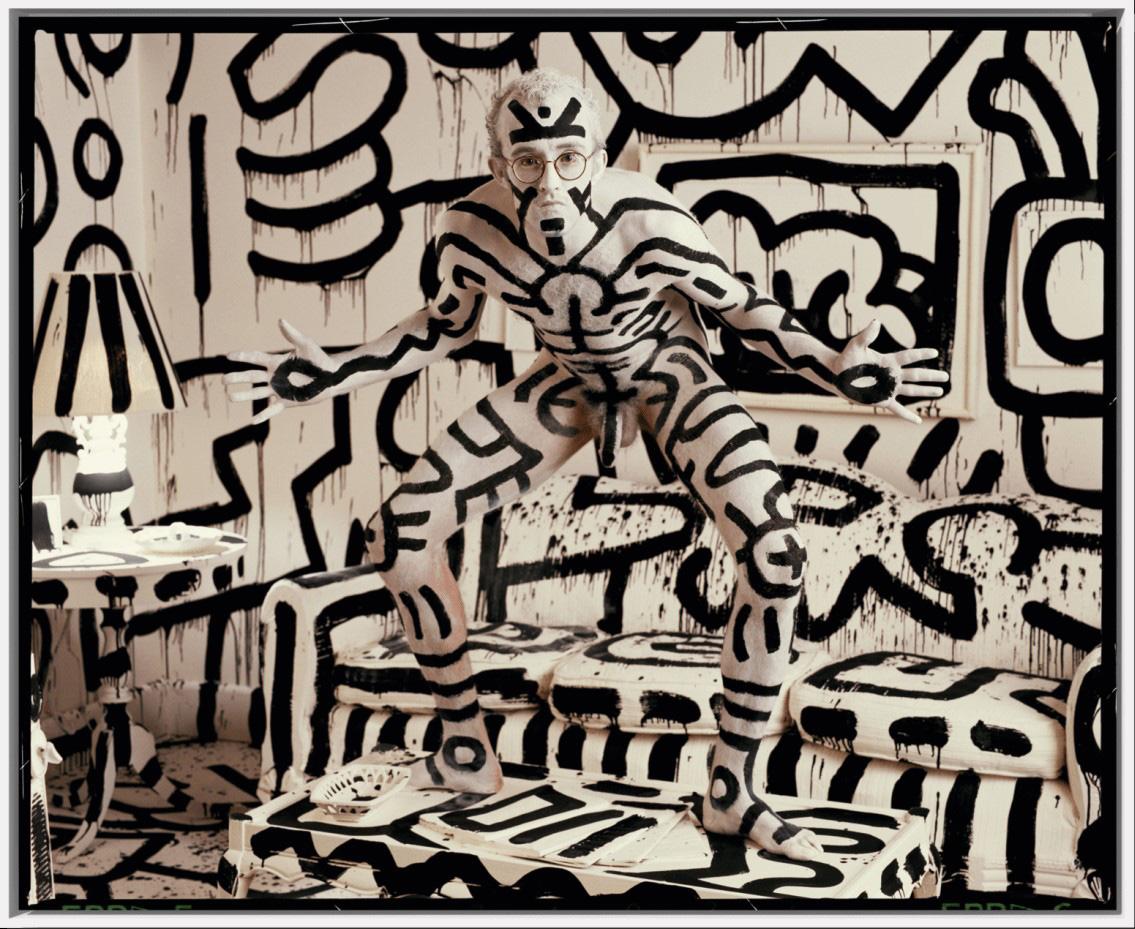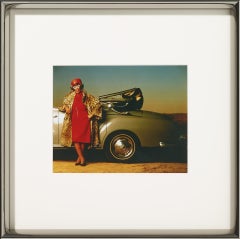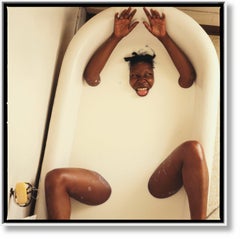Questions & Answers
Our trusted network of 1stDibs sellers answer common questions
What is Annie Leibovitz's most famous photo called?
1 Answer

What Annie Leibovitz's most famous photo is called may be surprising. Most historians state that the image of John Lennon and Yoko Ono that the photographer snapped for the January 1981 cover of Rolling Stone is her most famous work. However, it does not have a title apart from “John Lennon and Yoko Ono, The Dakota, New York, December 8, 1980” which refers merely to its subjects and when and where it was taken (it has also appeared online as simply “John Lennon and Yoko Ono”). Leibovitz took the photo on the same day that John Lennon was assassinated outside his apartment. She has previously called it "the photograph of my life." On 1stDibs, find a collection of Annie Leibovitz photography.
1stDibs ExpertMay 30, 2024
Related Questions
- What is Annie Leibovitz famous for?1 Answer
- Is Annie Leibovitz a portrait photographer?1 Answer
- What is Raphael’s most famous painting called?1 Answer
- What is Hopper's most famous painting called?1 Answer
- What is the famous Prada bag called?1 Answer
Shop for Annie Leibovitz Art on 1stDibs
Ella FITZERALD " Mercédès " 1988
By Annie Leibovitz
Located in CANNES, FR
Annie Leibovitz ( 1949- )
photo : 24 x19 cm .
Ella Fitzgerald devant un cabriolet Mercedes . 1988
Original Vintage work .
Framed : 42 X 42 cm
Category
1980s Modern Portrait Photography
Materials
Photographic Paper
Whoopi Goldberg, California, 1984 Signed, Framed, ChromaLuxe aluminium Print
By Annie Leibovitz
Located in Los Angeles, CA
Art Edition “Whoopi Goldberg” (No. 1–450). Hardcover volume in a slipcase, accompanied by the portrait Whoopi Goldberg, Berkeley, California, 1984.
For over 50 years, Annie Leibovit...
Category
21st Century and Contemporary Color Photography
Materials
Dye Transfer
Keith Haring, New York City, 1986 Signed, Framed, ChromaLuxe aluminium Print
By Annie Leibovitz
Located in Los Angeles, CA
Art Edition “Keith Haring” (No. 1–1,000). Hardcover volume in a slipcase, accompanied by a numbered, signed, and framed dye-sublimation ChromaLuxe aluminum print of Keith Haring, New...
Category
21st Century and Contemporary Color Photography
Materials
Dye Transfer
David Byrne, Los Angeles, 1986 Signed, Framed, ChromaLuxe aluminium Print
By Annie Leibovitz
Located in Los Angeles, CA
Art Edition “David Byrne” (No. 1–275). Hardcover volume in a slipcase, accompanied by the portrait David Byrne, Los Angeles, 1986.
For over 50 years, Annie Leibovitz has been creating a body of work that is unequaled in breadth and influence. From the viscerally immediate reportage made for Rolling Stone magazine in the 1970s and extending through the more stylized portraiture of her work for Vanity Fair and Vogue, her pictures make up what is essentially a family album of our time.
In 2014, in close collaboration with Annie, TASCHEN published a SUMO edition of her work: over 200 photographs, many of them famous (the naked John Lennon entwined in a last embrace with Yoko Ono, Patti Smith on fire) and some rarely, if ever, seen before. In 2022, to accommodate a wider audience, this volume was recreated as an unlimited XXL edition.
The XXL volume is now available as an Art Edition in four different versions, each accompanied by a signed, numbered and framed dye-sublimation ChromaLuxe aluminum print. David Byrne, Los Angeles, 1986 is included in an edition of 275 copies.
In 1986, David Byrne wrote, directed and starred in his only feature film, True Stories. It was a quirky view of life in small-town rural Texas. Several of his collaborators on the project were from the downtown New York performing-arts world. Music was an integral element in the film and much of it was supplied by Byrne’s band, the Talking Heads...
Category
21st Century and Contemporary Color Photography
Materials
Dye Transfer
Poster: Photographs 1970-1990 with Steve Martin (Hand signed by Annie Leibovitz)
By Annie Leibovitz
Located in New York, NY
Annie Leibovitz
Photographs 1970-1990 (Hand signed by Annie Leibovitz), 1993
Offset lithograph poster (hand signed)
Boldly signed in black marker on the front
30 × 24 inches
Ansel Adams Center for Photography, San Francisco in collaboration with the National Portrait Gallery, Smithsonian Institution
Unframed
This offset lithograph poster was published on the occasion of the Annie Leibovitz' 1993 survey exhibition at the Ansel Adams Center for photograph in San Francisco. The photograph of course depicts the actor and renowned art collector Steve Martin in front of a Franz Kline painting entitled Rue, which Martin apparently once owned. Steve Martin was said to have always wanted to be part of the painting; Complete with black brushstrokes on his white suit, Martin realized his dream and posed for Leibowitz in front of Rue. (Of course the irony is that Martin cuts a gleeful, almost clownish pose in front of a painting, Rue, whose very name means sorry and regret. Perhaps Martin will rue the day he sold this Franz Kline!) A companion photo appeared on the cover of Rolling Stone magazine. The Portland Art Museum also exhibited the photo Annie Leibovitz took of Steve Martin in Beverly Hills when he posed for his portrait.
A coveted poster when hand signed by Annie Leibovitz
Provenance: Collection of former Trustee of the Portland Museum of Art
Annie Leibovitz Biography:
Born in 1949, Annie Leibovitz graduated from the San Francisco Art Institute in 1971. Photos she took during college while living on a kibbutz in Israel and working to uncover the remains of King Solomon’s Temple helped land her a job at Rolling Stone magazine, where she was quickly named chief photographer. Between photographing John Lennon and documenting the Rolling Stones’ 1975 concert tour, Liebovitz reinforced her reputation as the most prominent celebrity photographer of her generation. In 1983, she moved to Vanity Fair, where she broadened her range of subjects from rock stars to other public figures like the Dalai Lama. In 1991, Leibovitz became only the second living photographer to be featured in an exhibit at the National Portrait Gallery.
Overview and Early Life
For decades, Annie Leibovitz and her camera have exposed to the public eye subtleties of character in rock stars, politicians, actors, and literary figures that lay beneath their celebrity personae. Her work first fueled the American fascination with rock ’n’ roll dissidents in the 1970s and then, in the 1980s and 1990s, captured the essence of the day’s great cultural icons. Her photographs make plain that, as Leibovitz herself once put it, she was not afraid to fall in love with her subjects.
Anna-Lou Leibovitz was born on October 2, 1949, in Westbury, Connecticut. She was the third of six children of Marilyn Leibovitz, a modern dance instructor, and Sam Leibovitz, an air force lieutenant colonel. As the daughter of a career military officer, Leibovitz moved with her family frequently from town to town. The constant relocation fostered strong ties among the six Leibovitz children.
Education and Work with Rolling Stone
Leibovitz attended the San Francisco Art Institute from 1967 until 1971. She shifted her focus from painting to photography early in her college career. In 1969, she lived on Kibbutz Amir in Israel. The archaeological team on which she worked during her five months in Israel uncovered the remains of King Solomon’s Temple. By the time Leibovitz received her bachelor of fine arts degree in 1971, her photographs of Israel and a picture of the poet Allen Ginsberg at a San Francisco peace march had already landed her a job at the music magazine Rolling Stone.
Soon after she was hired, Leibovitz convinced editor Jann Wenner to grant her a breakthrough assignment. Leibovitz flew with Wenner to New York City to interview John Lennon. A photo from that trip adorned the cover of Rolling Stone, the first of dozens Leibovitz would shoot over the course of her career with the music magazine. In 1973, she was named chief photographer.
The mid-1970s brought Leibovitz an increasing amount of notoriety and its concomitant tribulations. In 1975, the rock band the Rolling Stones invited Leibovitz to document their six-month concert tour. Living in the world of her subjects, her camera did not shield Leibovitz from the rock ’n’ roll life-style. She began using cocaine on tour and struggled for years afterward to recover.
Photography Exhibits and Move to Vanity Fair
In 1983, Leibovitz put together her first major exhibit, which led to the publication of her book Annie Leibovitz: Photographs (1983). Her ability to work with her subjects to get beneath the veneer of superficiality that typically characterizes Hollywood paparazzi has reinforced her reputation as the most prominent celebrity photographer of her generation. The rapport Leibovitz develops with her subjects creates an atmosphere in which celebrities will strike the most unconventional of poses and show emotions that other photographers could not evoke. Among her most famous shots are a naked John Lennon curled around a fully clothed Yoko Ono, Bette Midler in a bed of roses, and the Blues Brothers painted blue.
In 1983, after more than a decade of photographing such rock ’n’ roll legends as Lennon, Bob Dylan, Stevie Wonder, and Bruce Springsteen, Leibovitz left Rolling Stone for Vanity Fair. This move gave her the opportunity to shoot a broader range of subjects, including the Dalai Lama, Vaclav Havel, and Donald Trump. Her art did not suffer from the change. The American Society of Magazine Photographers selected her as the Photographer of the Year in 1984.
Advertising Work, Awards, and Honors
In addition to her work for Vanity Fair, Leibovitz became active in advertising photography. In 1986, she was the first photographer ever to be commissioned to design and shoot posters for the World Cup. A campaign she designed for American Express brought Leibovitz a storm of critical acclaim. In 1987, she received the Innovation in Photography Award from the American Society of Magazine Photographers, a Clio Award from Clio Enterprises, and a Campaign of the Decade Award from Advertising Age for the “Portraits” campaign she produced for American Express. Then, in 1990, the International Center of Photography recognized the same work by giving Leibovitz the Infinity Award for applied photography.
n 1991, Leibovitz became only the second living photographer to be featured in an exhibit at the National Portrait Gallery in Washington, D.C. She published this retrospective in book form under the title Annie Leibovitz: Photographs, 1970–1990. In anticipation of the centennial Olympic games, Leibovitz spent two years photographing athletes...
Category
1990s Contemporary Portrait Prints
Materials
Ink, Lithograph, Offset
Annie Leibovitz, Art Ed, SUMO book, Marc Newson stand, Black & White photography
By Annie Leibovitz
Located in Los Angeles, CA
Annie’s Big Book
Famed photographer Annie Leibovitz weighs in with her own SUMO
Art Edition (No. 1–1,000)
Archival pigment print Keith Haring (contact sheet), New York City, 1986...
Category
21st Century and Contemporary Portrait Photography
Materials
Archival Pigment


